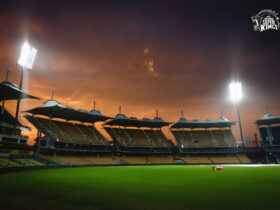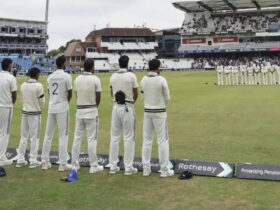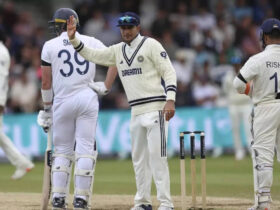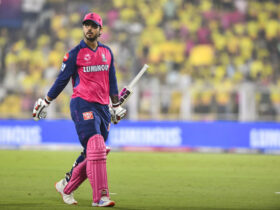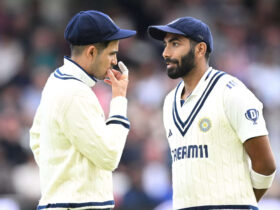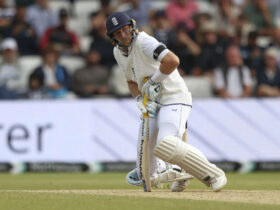India Tour of England 2025: Fascinating Secrets of the 5 Iconic Test Venues
As the cricketing world braces for the highly anticipated India Tour of England 2025, a new chapter unfolds for the Indian team. With stalwarts like Virat Kohli, Rohit Sharma, and Ravichandran Ashwin stepping away from Test cricket, a fresh leadership duo of Shubman Gill (captain) and Rishabh Pant (vice-captain) takes charge, facing the stern test of English conditions. For England, this series is a critical stepping stone in a packed red-ball calendar, with the Ashes 2025 looming large. As excitement builds, the spotlight falls on the five historic venues hosting this clash of titans. Beyond their hallowed turfs lie captivating stories and little-known facts that add depth to their legacy. Let’s dive into the secrets of these iconic grounds.
1. Headingley, Leeds: A Turf Tale of Football Fiasco
Nestled in Yorkshire, Headingley is synonymous with dramatic Test matches, but it once played host to an unusual event that left its mark—quite literally. In 1932, during a lull in the cricket season, the ground staged a football match. The soft summer pitch, unprepared for the rough-and-tumble of football, was left in tatters with divots and uneven patches. When a County Championship game followed, players struggled with poor footing and erratic bounce, leading to a barrage of complaints. This debacle prompted the Yorkshire County Cricket Club and the MCC to enforce stringent rules against multi-sport usage during the cricket season, a policy that shaped ground management across England. It’s a reminder of how fiercely cricket protects its sacred turf.
2. Edgbaston, Birmingham: The Electric Atmosphere and a Bradman Heartbreak
Known for its raucous crowds, Edgbaston is a fortress of English cricket. It became the first English ground to install permanent floodlights in 1997, ushering in the era of day-night cricket. But the heart of Edgbaston lies in the Eric Hollies Stand, named after the bowler who etched his name in history by dismissing the legendary Don Bradman for a duck in his final Test innings in 1948 at The Oval. This denied Bradman a career batting average of 100, leaving him stranded at 99.94—a number etched in cricketing lore. The stand today embodies both historical gravitas and an electrifying atmosphere, often turning matches with sheer crowd energy.
3. Lord’s, London: The Home of Cricket with Hidden Depths
Often called the Mecca of Cricket, Lord’s is more than just a venue; it’s a living museum of the sport. One of its quirkiest features is the 2.5-metre slope across the pitch, sloping from the Nursery End to the Pavilion End, which challenges bowlers and batsmen alike with its impact on seam and swing. Players often speak of needing time to adapt to running uphill or downhill during play. Beneath the iconic Pavilion, another treasure awaits—the world’s oldest cricket library, housing rare manuscripts, scorecards, and books dating back to the 1700s. It’s a hidden gem that underscores Lord’s status as the spiritual heart of cricket.
4. Old Trafford, Manchester: Where Laker’s Legend Lives On
Old Trafford, often dubbed the ‘Theatre of Dreams’ for cricket lovers, has witnessed some of the game’s greatest moments. It hosted the first-ever Ashes Test on English soil in 1884, setting the stage for a storied rivalry. However, its crowning glory came in 1956, when England’s Jim Laker delivered an unmatched performance, claiming 19 wickets for 90 runs against Australia in a single Test—the best match figures in Test history to date. A commemorative plaque on the dressing room balcony immortalizes Laker’s feat, ensuring that every visitor feels the weight of history at this Manchester stronghold.
5. The Oval, London: The Birthplace of English Test Cricket
Before Lord’s claimed its title as the home of cricket, The Oval laid the foundation for England’s Test legacy by hosting the country’s first-ever home Test match against Australia in 1880. This South London venue became the cradle of English Test cricket, and for over a century, its skyline was dominated by the towering Kennington Gasworks. Though dismantled in recent years, these industrial giants remain iconic in cricketing imagery, often captured in vintage match footage. The Oval continues to be a symbol of tradition and grit, often hosting the final Test of an English summer.
As the India Tour of England 2025 approaches, these five venues—each with its unique quirks and storied past—promise to be more than mere backdrops. They are active participants in the drama, shaping play with their distinct characteristics and echoing with the ghosts of cricketing giants. Whether it’s the slope at Lord’s or the echoes of Laker at Old Trafford, these grounds hold secrets that enrich every delivery bowled and every run scored. Which venue’s story intrigues you the most? Let the countdown to this epic series begin!




